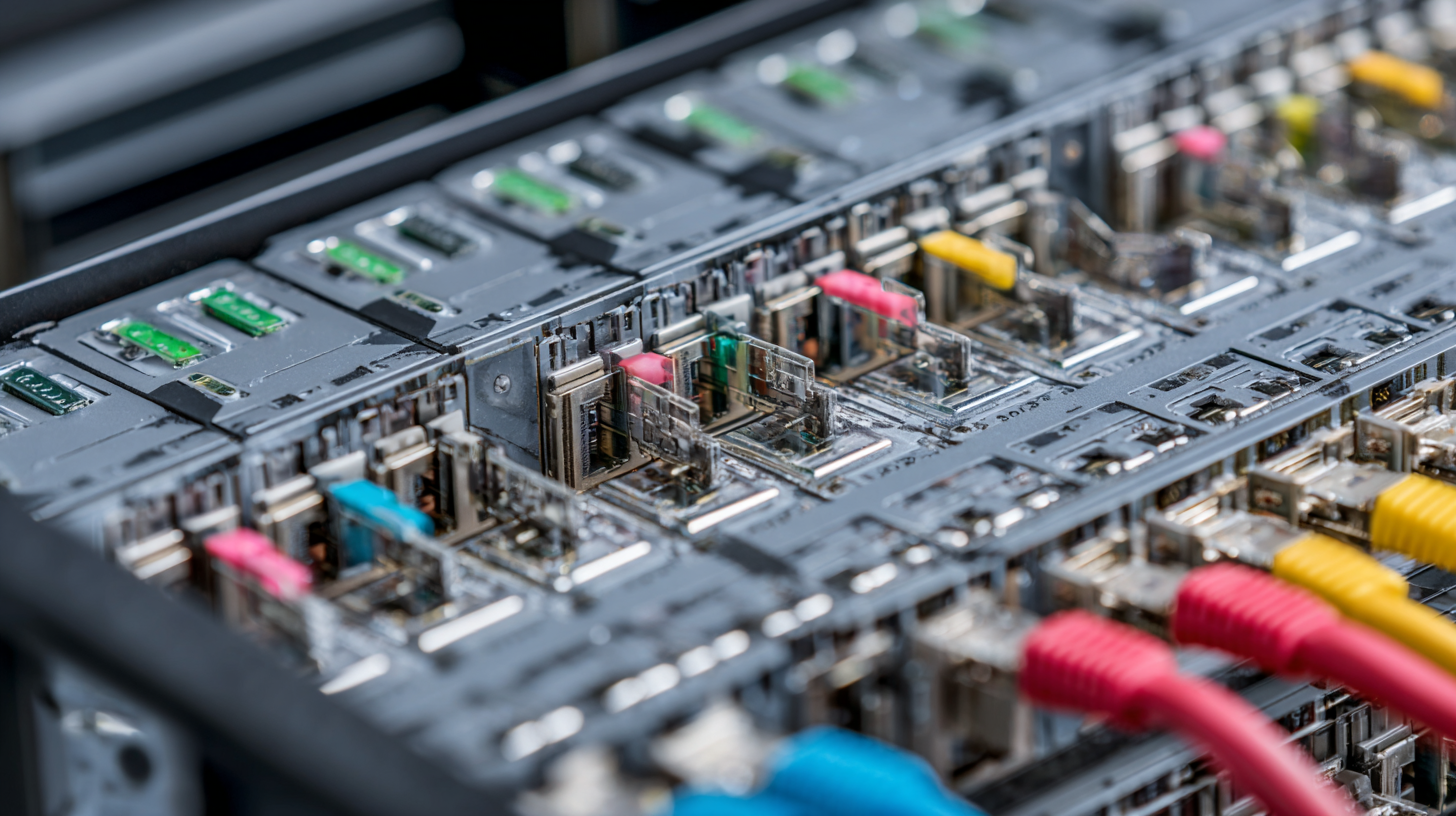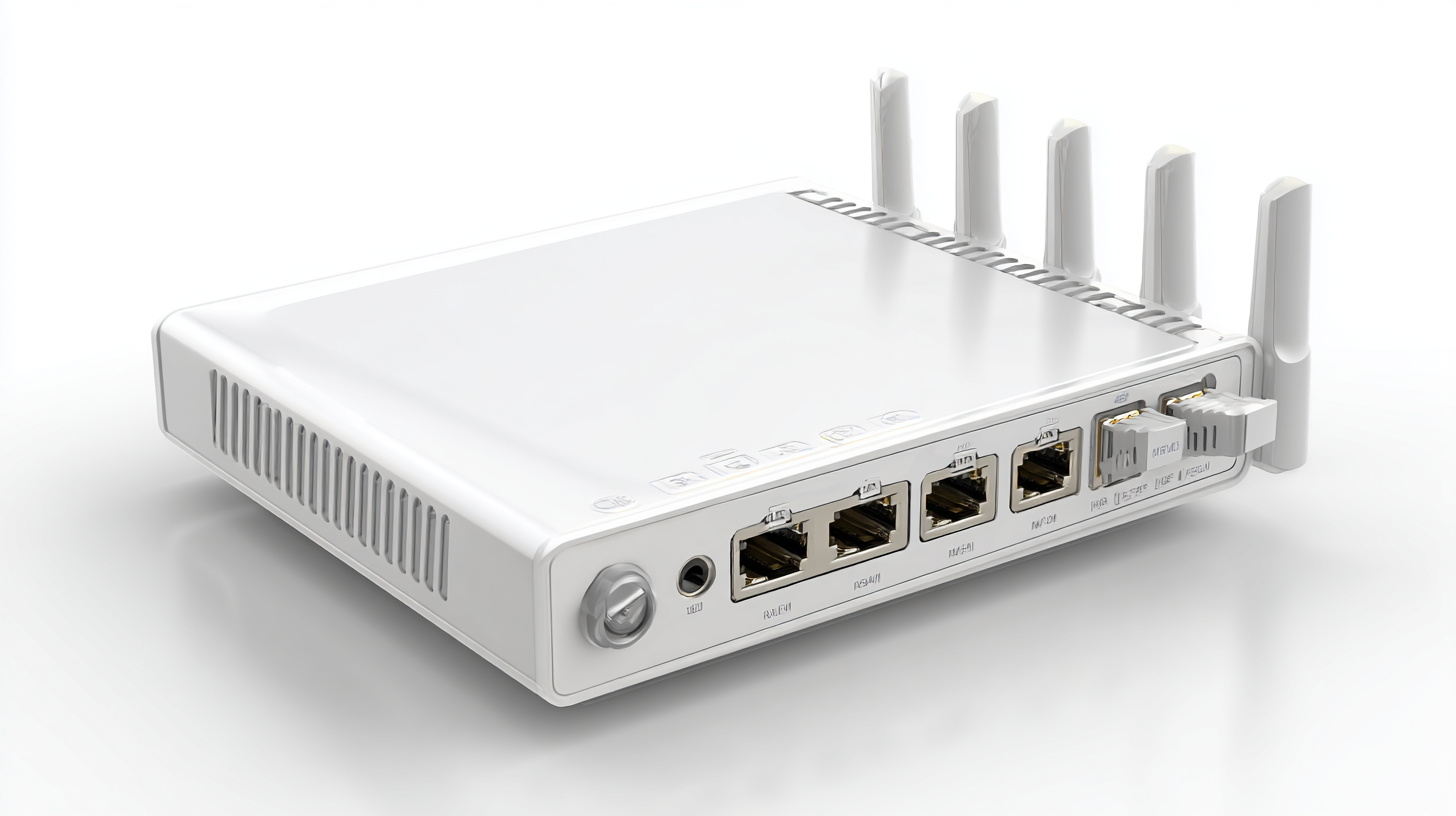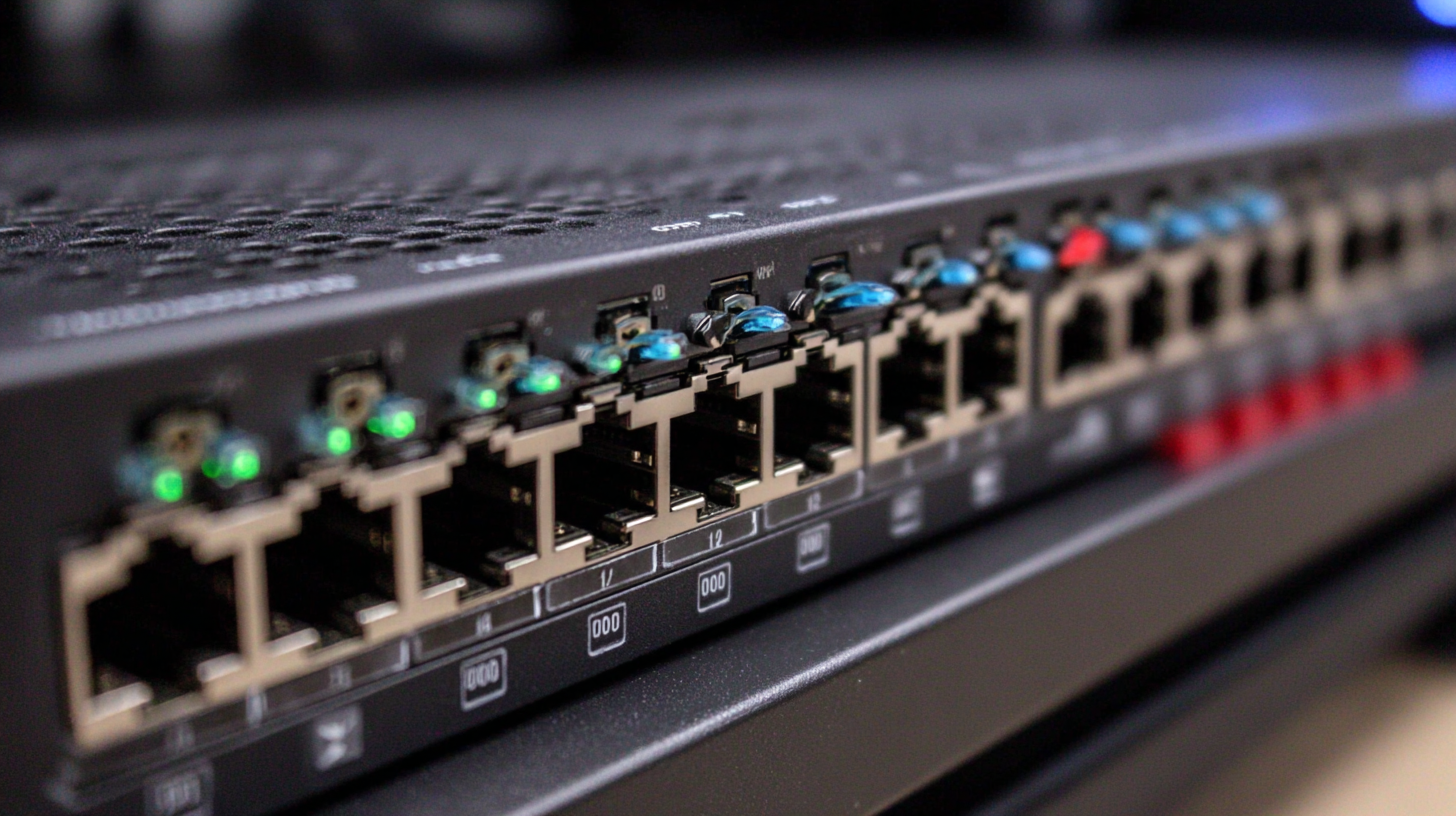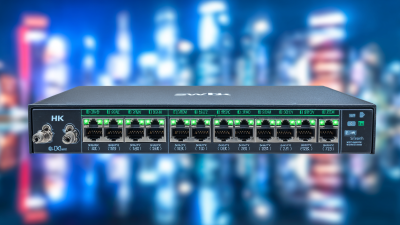
- hasivo@hasivo.com
- Mon - Sat at 7:00AM to 9:00PM
Leave Your Message

As organizations continue to embrace data-driven strategies, the demand for high-speed networking has never been greater, leading businesses to consider the implementation of a 10g Switch for their infrastructure. According to a recent study by Gartner, the global Ethernet switch market is projected to reach $30 billion by 2025, with 10G switching technology playing a pivotal role in that growth. This surge in demand can be attributed to the need for improved bandwidth to support the increasing number of connected devices and cloud computing services. A 10g Switch not only enhances data transfer rates but also reduces latency, making it essential for enterprises looking to optimize their networks for performance and scalability. However, with a variety of options available on the market, selecting the right 10g Switch tailored to specific network needs requires careful consideration of factors such as capacity, management features, and compatibility.

When selecting the right 10G switch for your network needs, understanding your network infrastructure requirements is crucial. The global market for critical infrastructure protection was valued at approximately $9.63 billion in 2019 and is projected to grow to $15.46 billion by 2027, at a compound annual growth rate (CAGR) of 6.2%. This significant growth in market size reflects increasing demands for robust data center network infrastructure, especially with the rapid expansion of AI workloads, which require substantial data handling capabilities.
As organizations move towards a more interconnected digital ecosystem, it's essential to integrate your networking hardware with existing infrastructure effectively. The National Science and Technology Council emphasizes the importance of interconnectivity frameworks to enhance research and innovation, signaling a shift towards data-driven interactive research models. This transition demands switches that not only support higher bandwidth but also provide scalability to accommodate future growth.
Tip 1: Assess your current and anticipated data traffic. This understanding will help you choose a switch that meets current demands while being scalable for future needs.
Tip 2: Evaluate the compatibility of the switch with existing network devices. Ensuring seamless integration can significantly enhance operational efficiency and reduce costs over time.
Tip 3: Prioritize switches that offer management features, such as monitoring, automation, and security capabilities, to keep pace with evolving network requirements stemming from advancements in AI and cloud technologies.
When selecting a 10g switch for your network, it's crucial to identify key features that influence optimal performance. According to the latest report from the International Data Corporation (IDC), 10g Ethernet switches are projected to drive a significant portion of data center growth, with a market increase of over 15% through 2025. One primary feature to consider is the port density—switches offering higher port counts not only enhance scalability but also ensure efficient traffic management in densely connected environments. It’s advisable to choose switches with at least 16 ports to accommodate future expansion needs.

Another important factor is the switch’s throughput capacity, which can significantly impact overall network performance. A study from Gartner indicates that organizations using switches with advanced Quality of Service (QoS) capabilities experience up to 30% improvement in network efficiency compared to traditional switches. Look for models that support advanced routing protocols and Layer 2 to Layer 4 switching for seamless interoperability and enhanced data transmission efficiency. Additionally, features such as low-latency performance and energy efficiency are increasingly vital for reducing operational costs while maintaining high-speed connectivity.
When selecting a 10G switch for your network, it's essential to understand the difference between managed and unmanaged switches, as each type serves distinct needs. Managed switches provide advanced features such as VLAN support, traffic prioritization, and network monitoring, enabling you to configure and optimize your network environment. These capabilities make managed switches ideal for larger networks or organizations that require higher performance and control over data flow.
On the other hand, unmanaged switches offer simplicity and ease of use, making them suitable for smaller networks or less complex setups. Without the need for configuration, unmanaged switches plug directly into the network and begin operating immediately. Although they lack the advanced features of managed switches, they can be cost-effective solutions for environments where greater control and customization are not necessary. When deciding between the two, consider factors such as network size, future scalability, and resource availability to ensure you select the switch that best aligns with your specific network needs.
| Feature | Managed Switch | Unmanaged Switch |
|---|---|---|
| Configuration Options | Full customization and control | Plug-and-play setup |
| Network Management | Advanced monitoring and management features | No management features available |
| Cost | Generally higher cost due to features | Typically lower cost |
| Best Use Case | Large businesses with complex networks | Small offices or simple network setups |
| Firmware Updates | Regular updates available | No updates provided |
| Performance Features | VLANs, QoS, traffic segmentation | Basic performance without advanced features |
When selecting a 10G switch, it's essential to evaluate the cost versus the benefits to ensure you make a budget-conscious yet efficient choice. A higher upfront cost may seem daunting, but investing in quality can lead to long-term savings by reducing maintenance and downtime. Consider the specific features that align with your network needs, such as port density, speed, and additional functionalities like layer 3 capabilities.
Tips: Always analyze your current and future network demands. If you anticipate growth or increased data traffic, lean towards a switch that offers scalability. Additionally, assess whether you need advanced features such as Quality of Service (QoS) for managing bandwidth effectively, as this can enhance overall network performance without significantly increasing costs.
Furthermore, don't overlook the warranty and support services offered by the vendor. A switch with a robust support plan can save you money in the event of hardware failures or configurations issues. It's also beneficial to compare different vendors and models, taking note of performance reviews and user feedback to ensure you're truly getting the best value for your investment.
When selecting a 10g switch, considering scalability and future-proofing is essential for accommodating long-term network growth. A scalable network infrastructure allows for the addition of new devices and higher bandwidth capabilities as your organizational needs evolve. Look for switches that offer modular designs or support for stacking, which can facilitate easy upgrades without requiring a complete overhaul of your existing system. This flexibility ensures that your investment remains relevant as technology progresses and your bandwidth requirements increase.

Moreover, it is crucial to choose a switch that supports emerging technologies and standards. Look for features like higher port density, support for advanced networking protocols, and compatibility with 25G or 40G networks. This preparation can provide a seamless transition as your demand for data throughput grows. By prioritizing scalability and future-proofing in your switch selection, you can ensure that your network remains robust and capable of meeting the challenges that lie ahead.





